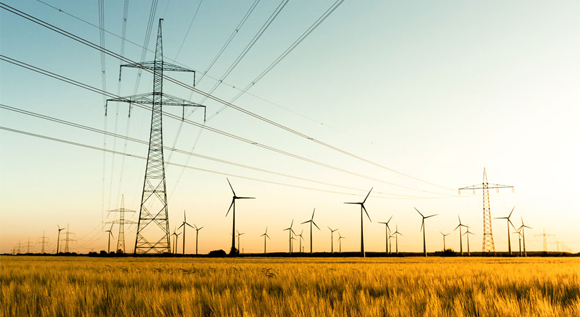An electricity grid for the net zero future
The current Network Development Plan for the first time sets out a grid ready to deliver net zero by 2045 with a focus on renewables expansion, the use of green hydrogen and a flexible grid.
 © iStock.com/kfIGALORE
© iStock.com/kfIGALORE
The goal is clear: our electricity supply is to become climate neutral by 2045. This means that as early as 2030, 80% of the Germany’s electricity use is to be covered by renewables. This will require a substantial acceleration of renewables expansion, particularly of solar and wind energy.
Grid expansion planning starts 10 to 15 years ahead of the actual construction work.
Nobody knows how much electricity we will need in the next 10 to 15 years, how much energy will be fed into the grid, from which sources, or how much electricity will be consumed. Despite this uncertainty, we need a network of electricity lines that will ensure our electricity supply remains reliable. This means that grid expansion needs to be planned as early – at least 10 to 15 years ahead – and in as much detail as possible in order to avoid unnecessary costs.
In the Electricity Network Development Plan (NDP), the transmission system operators lay down the need for expanding the German transmission systems every two years. The first step in the grid expansion process is the drafting of the scenario framework, which provides assumptions for grid planning and thus serves as the basis for the Network Development Plan.
The scenario framework sets out scenarios that show how the energy landscape is likely to develop. Based on these scenarios, the transmission system operators devise a plan for the grid and submit their proposal as part of the Network Development Plan to the Bundesnetzagentur for approval.
Preview: the scenario framework for 2037 and 2045.
The current scenario framework for the 2023 Network Development Plan looks at the years 2037 and 2045 and thus for the first time refers to the net zero target. The scenario framework assumes that in 2045 energy consumption will exceed 1,000 terawatt-hours (TWh). In terms of renewables expansion, it expects that there will be 70 gigawatts (GW) of offshore wind energy, 160 GW of onshore wind energy and 400 GW of solar capacity.
Building on this, the Bundesnetzagentur approved three development pathways to serve as the basis for further grid planning: Pathway A has a relatively strong focus on the use and production of hydrogen, assuming greater use of hydrogen particularly in heavy-duty haulage and the manufacturing sector compared with the other scenarios. Pathway B makes greater use of electrification, whilst assuming that potential efficiency gains can be tapped to reduce demand. Pathway C, finally, works with the same level of electrification as pathway C but assumes that these efficiency gains cannot be realised.
Adding lines – how the grid could be expanded in the future
The draft presented by the transmission system operators includes five new direct current connections on land for the purpose of “managing the resulting transport needs”, two of which will be routed along existing corridors. In addition to this, 20 new grid connections at sea are also being planned. Furthermore, the transmission system operators propose expanding the alternating current network to a length of 4,500 kilometres.

